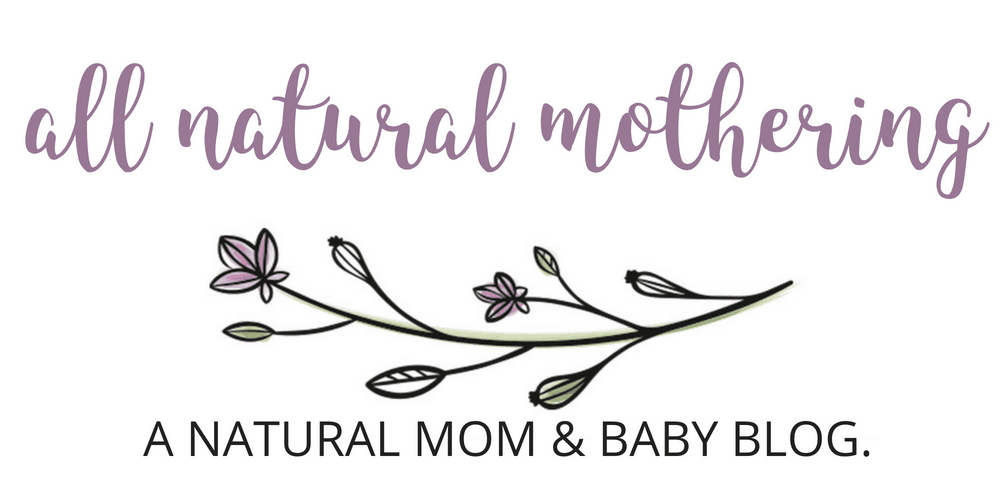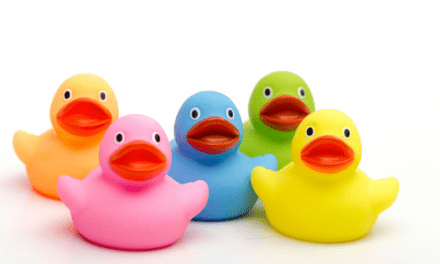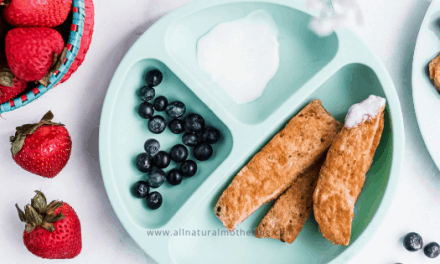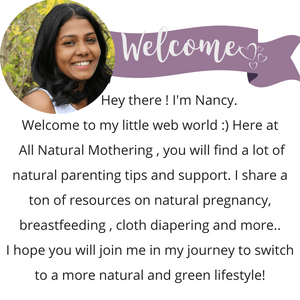Have you ever noticed how much your baby enjoys gaining his independence?
Crawling, walking, holding a bottle, drinking from a sippy, or using a spoon, there’s a noticeable delight as your little one learns to do daily activities on his own.
Using the spoon is one of the first big steps out of infancy and into the world of the big kids, and it’s helpful to follow your baby’s developmental cues when introducing the spoon.
Perhaps more important for your baby’s feeding experience is finding the best baby spoons in terms of safety, useability, and ease of cleaning.
When to introduce spoons to baby?
As a rule of thumb, most babies are ready to begin using a spoon independently between 12 to 15 months old and usually get the hang of feeding themselves with utensils by around 18 months.
There’s no perfect age to introduce the spoon to your baby, as all children gain the motor control and dexterity to hold a spoon around different times.
It also depends on when you introduced solid foods to your baby and whether you fed them initially or followed baby-led weaning practices.
In any case, it’s usually helpful to allow your baby to get the hang of eating with her hands and fingers before she moves on to the spoon.
Here are some signs that it may be time to introduce the spoon;
- Your baby reaches for the spoon as you are feeding her.
- She tries to pick up and hold the spoon during meal times.
- She watches your movements as you bring your utensils from plate to mouth.
Pros of Silicone Spoons:
The benefit to using soft silicone baby spoons is that they are lightweight and malleable, so they make a perfect first tool for your baby’s feeding journey!
They are a safer alternative to plastic, and softer than stainless steel, and bamboo baby spoons.
The best baby spoons are ones with chunky handles and a hollow scoop so your baby can easily hold and maneuver the food into her mouth.
We take for granted the skill and coordination needed to eat with utensils, but for babies, it’s a whole new world!
When first introducing a baby spoon, begin with foods like yogurt, applesauce, scrambled eggs, and steamed, mashed vegetables so your baby can practice the art of scooping.
Are silicone baby spoons safe?
During the 1940s, the U.S. began to examine the uses of the naturally occurring mineral silicon, which originates from the compound silica, or sand (good news for making safe products)!
As it turned out, they could support war efforts by coating electrical equipment in airplanes with silicone.
In 1960, Neil Armstrong used boots with silicone soles to make his giant step for mankind on the moon!
And in the 1990s, the first contacts were developed with silicone hydrogel.
Since then, we have traded out plastics, rubbers, and other materials with the use of silicone in many of our products – particularly for babies and toddlers.
Unlike plastic spoons, silicone baby spoons are more safe and durable because silicone does not leach toxic chemicals when heated like plastics.
Likewise, silicone is more suitable for baby products because it’s shatterproof unlike glass and more flexible and soft than stainless steel.
Silicone baby spoons are also lightweight for babies and toddlers to use, and since silicone is not porous, it doesn’t harbor bacteria like other materials.
Another great safety factor is that silicone resists oxidative deterioration.
In other words, it doesn’t age like other materials and withstands treatments like hot washing, sterilization, changes in temperatures, and UV rays! (You may not use spoons outdoors too often, but it’s good to know they’d be safe in the sun!)
This special ability of silicone also makes it resistant to stains, odors, and discoloration. (In other words, mama, it’s quick and easy to clean!)
Note: A few recent studies, like this one, have shown that that when silicone is placed under extreme conditions, such as exposure to heat above 300F or storing high-fat foods in extreme temperatures, it can release siloxanes, which are linked to endocrine disruption and reproductive issues.
The study specifically tested silicone nipples on a baking sheet and in a concentrated alcohol solution to check if siloxanes could pass into milk or baby formula.
After 6 hours on baking sheets at 40C (or 104F), no siloxanes were detected.
After 8 hours in an ethanol solution, trace amounts of siloxanes were detected.
In other words, some siloxanes may be released after hours of exposure to extreme conditions.
We share this study for complete transparency about the products we recommend, but in reality, your silicone baby spoons, cups, dishes, or nipples shouldn’t be exposed to this kind of rigorous chemical breakdown (i.e. concentrated alcohol solutions) through normal, everyday use!
This study, like others, shows us the benefits and convenience of using silicone products.
But do be careful to choose silicone baby utensils that are 100% food grade silicone as cheaper products sometimes contain silicone and fillers.
You can also help your silicone baby utensils last longer by washing them gently with dish soap that is free of oils and fragrances.
Best Silicone Baby Spoons:
Most silicone products are manufactured in China, so we wanted to ensure that we select silicone baby spoons with the best manufacturing practices and quality control.
In order to meet this criteria, companies must do 3 things:
- Independently test products to verify safety, validate suitability (does the product work the way it should?) and catch any flaws!
- Meet or exceed safety standards established by the CPSC (Consumer Product Safety Commission) and ASTM (American Society for Testing and Materials)
- Conduct follow-up tests on products at periodic intervals to compare with updated scientific findings and research
Let’s look at the best and safest silicone baby spoons.
These make our list for being toxin-free alternatives to plastic baby feeding spoons!
1.Ola baby
Pros
- Perfect for baby-led weaning as shape of spoon helps baby scoop food at any angle
- Flat spoon base allows spoon to be stood upright (hygienic)
- Round base is perfect for chubby hands to grasp
- Dishwasher and freezer friendly
Cons
- Silicone begins to tear with babies who are teething and chew on them often
- Because the bowl of the spoon is thin (for flexibility), it only holds a small amount of food
- More expensive than most other silicone baby spoons
- Due to design, many babies are tempted to chew on it like a teether rather than use it as a spoon.
What parents are saying:
- Easy for my baby to grip and bring to her mouth, but spoon is slick so food slides off easily
- Flat curve on the tip of spoon fits easily into my baby’s mouth, and she has a much easier time feeding herself with these spoons
- Works like a slingshot because tip is very flexible, so my baby needs a lot of assistance to prevent her from flinging food
2.Ezpz Mini Spoon
Pros
- Fat, round handle with non-slip grip helps baby easily hold spoon
- Spoon is flexible and has a slight arc to be useful for dipping and scooping
- Tiny raised bumps on the spoon held provide sensory awareness so babies don?t push the spoon too far into their mouths
- Great for self-feeding
- Dishwasher and microwave-safe
Cons
- Doesn’t hold that much food due to flattened scoop design
- Pricey (about $15 for two spoons)
- Not ideal for purees as they slip off of spoon during feeding
What parents are saying:
- The narrow scoop of the spoon helps my baby eat all of her food
- Perfect for tiny hands to grasp
- The short handle is perfect for my baby feeding herself but not as easy for me to feed her
- It’s very small and portable, and we love traveling with it.
3.Avanchy Bamboo and Silicone Spoon
Pros
- Bamboo handle has smoothed sides which make it easy for baby to grasp and is also biodegradable
- Wide spoon base makes it difficult for babies to gag by placing the spoon in too far
- Bowl of the spoon is made well for scooping a decent amount of food
Cons
- The bowl, or hollow part of the spoon, is a little big for some babies mouths as it is about the size of a normal adult teaspoon. (Make sure to order infant selection and not baby selection of Avanchy spoons.)
- Water gets in between the handle and spoon head easily and can create mold if not cleaned thoroughly.
- Not dishwasher friendly because the bamboo handle may dry out and splinter
What parents are saying:
- They were too wide for my baby’s mouth until he was about a year old.
- Easy for my toddler to hold and scoop food without making a mess
- Bamboo handles do not hold up as well as the silicone part of the spoon and splinter after several months of use.
4.Choo-me
Pros
- Handle is firm for babies to grasp, but neck and bowl of the spoon are flexible and work well with any dishes
- Spoon head is flat with divots, called food channels, which allow the food to seep into the spoon for easier eating
- Tether loop at the end of the handle makes it easier to take on-the-go
- Great for babies who are just beginning purees as spoon is non-directional and picks up food without a scooping method
Cons
- Needs to be used with thicker pureed foods like Stage 2 baby food and yogurt
- Not good for scooping food, so not ideal for older babies who already have the hang of self-feeding
- On the expensive side (check price here)
What parents are saying:
- Easy to chew apart for older babies with teeth
- It was difficult for my baby to eat the food out of the grooves of the spoon.
- Great first spoon for babies who are beginning to self-feed because purees will get into the spoon no matter which way you turn it
- Too easy for my baby to fling food around because the spoon head is not curved
-
Boon Squirt Silicone Baby Food Dispensing Spoon
Pros
- All-in-one squeeze feeding spoon that holds food in handle of spoon
- This food dispensing baby spoon holds up to 3 ounces of food at a time
- Comes with a cap for the spoon to keep the part your baby eats from clean
- Easy to clean – spoon comes apart in 2 pieces
- Dishwasher safe
Cons
- Bowl of the spoon is made of plastic, while the spoon handle is made of silicone
- Cannot warm food inside of the spoon (not microwave safe)
- Difficult for baby to feed himself because of the dexterity required to carefully dispense food into the bowl of the spoon
- Does not work for liquids (come out too fast) or more solid foods – best only with purees
- Pricey (check price here)
The bowl being made of plastic is my biggest disappointment with Boon silicone feeders. This model has now been discontinued by Boon, I can only hope that they are coming up with a 100% silicone and plastic free feeder.
What parents are saying:
- Great for on-the-go feeding as it does not leak and tip of spoon can be covered and stored in a diaper bag
- The lid is nice for the hollow part of the spoon but does not cover the back side of the spoon head.
- Food tends to spew a little when it’s almost gone from the tube handle
- Bowl of the spoon is pretty deep and not as soft as silicone – the edges were even a little sharp until the spoon had been washed and scrubbed several times
-
Cute Stones Bendable Baby Spoon
Pros
- Entire spoon is bendable silicone and perfect for baby gums and teeth
- Spoon has a stainless steel core under the silicone cover, so it can be bent in any direction
- Great for self-feeding as the handle is the perfect size for little hands and the bowl of the spoon is narrow and hollow enough for little mouths
- Easy to clean, completely smooth surface
- Affordable compared to most other silicone baby spoons
Cons
- The bowl of the spoon has a hollow scoop, so it’s easy for food to fall off as baby brings it up.
- Not ideal for babies just beginning to self-feed or younger babies because the spoon head may be too wide for their mouths
- Some toddlers may find the bendable spoon design strange if they are accustomed to a regular baby spoon and will not want to use it.
What parents are saying:
- Because they are so bendable my toddler tends to play with them rather than eat, but they do work very well for self-feeding.
- Great quality, and it’s so easy for my baby to grip because of the non-slip handle design
- They are durable and last for a long time.
-
Munchkin 4 Piece Silicone Trainer Spoon
Pros
- Has a silicone choke guard around the spoon between the handle and the bowl of the spoon
- Dishwasher safe and very durable
- Made of very soft silicone so it is perfect for teething
- Spoon handles are wide and rounded which make them easy for baby to hold
Cons
- The bowl of the spoon is small, so it works better for younger babies.
- Clear silicone part of spoon stains easily with foods that have high pigmentation (think carrots and berries).
- Not ideal for use with baby food jars as choke guard prevents spoon from fitting
- May not work as well for older babies as they tend not to like the choke guard on the spoon
What parents are saying:
- Durable but soft silicone and held up well with my baby’s teething
- Great at preventing my baby from gagging compared to other silicone baby spoons
- The handles are too short for parents to hold but work fine for babies who are self-feeding.
- Doesn’t hold much food at once because the bowl of the spoon is not deep enough
-
Silikids Silispoon
Pros
- Tactile handle stimulates baby’s grip and is easy to hold
- Dishwasher safe and easy to clean
- Bowl of the spoon is shaped like a shovel to make it easy for babies and toddlers to push food against the side of a plate or bowl and into the spoon
- Shovel shape of spoon helps prevent gagging
Cons
- Not ideal for heavy foods like pastas and pieces of fruit (better for purees)
- Size of both the bowl of the spoon and handle are better suited for older babies (younger babies may find the spoon too big)
- Does not work well for beginning self-feeders and is more appropriate for older babies and toddlers
What parents are saying:
- The area where the bowl of the spoon meets the handle is too flexible and allows food to easily fall off
- Easy for my baby to grasp and worked well for baby-led weaning
- Too wide for my baby’s mouth but worked well as a teething toy
- Great for toddlers with sensory processing issues
-
Oogaa spoons
Pros
- Raised bumps on the bottom of the spoon help stimulate baby’s senses and may alleviate feeding aversions
- Safe for dishwasher, freezer, and sterilizer
- Flexible, soft, and perfect for teething babies
- Comes in different toy shapes (like train, aeroplane, etc.,) to make mealtimes fun.
Cons
- Tip of the spoons are thick so it’s challenging to scoop food, particularly purees
- Bowl of the spoon is shallow so it doesn’t hold much food in one scoop
- One of the most expensive silicone baby spoons (check price here )
What parents are saying:
- Shallow and flexible enough that my baby can eat from the Oogaa spoon really well
- My baby tends to keep this spoon in her mouth better than all others because of the textured bottom.
- Works great for teething and my baby cannot gag himself with this spoon
Conclusion
Helping your little ones learn to feed themselves with a spoon is a big adventure.
If you are introducing baby led weaning and looking for a great starter spoon, we recommend the Ola Baby Spoon or the Choo-Me.
Once your baby gets familiar with using spoons, you can move to trainer spoons like Munchkin or Avanchy.
There will be some mess and moxie (our fun word for determination) but as they develop their spoon feeding skills, youll both be so glad that silicone baby spoons kept them happy, healthy, and full!














